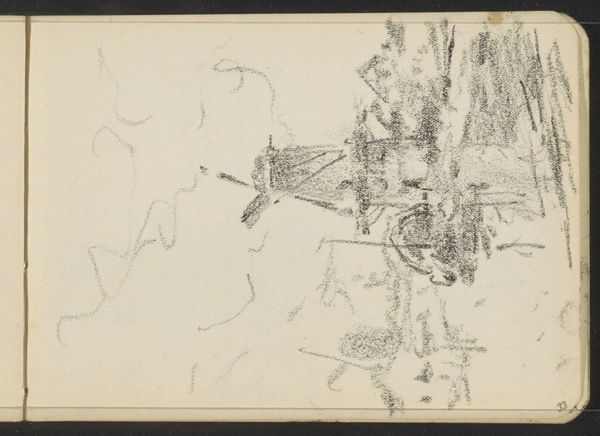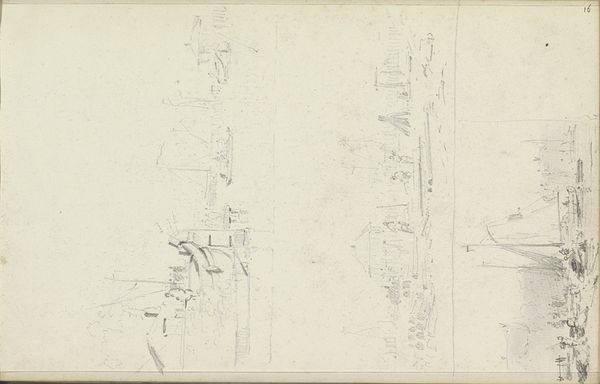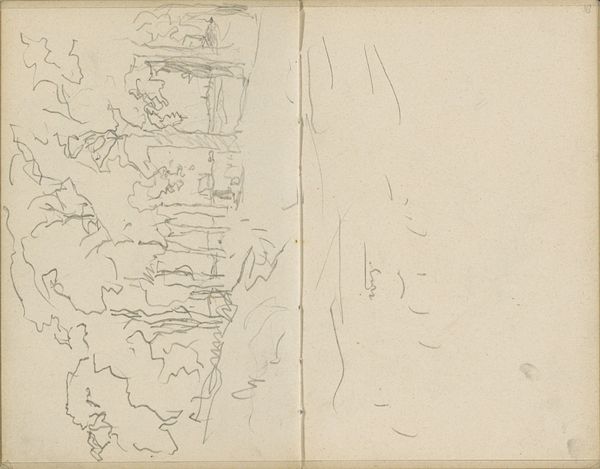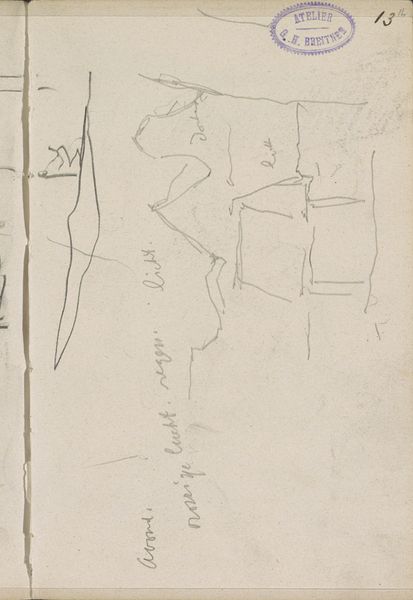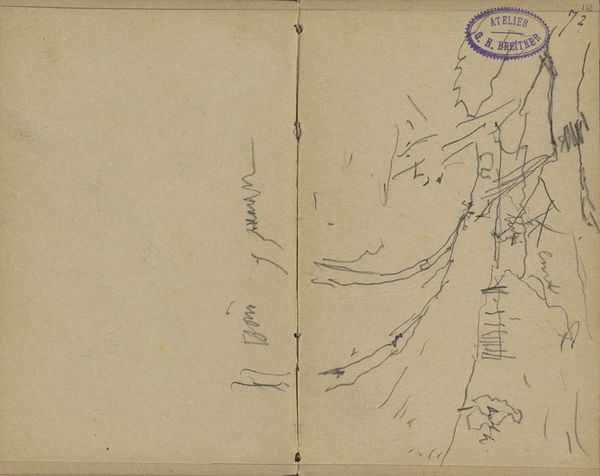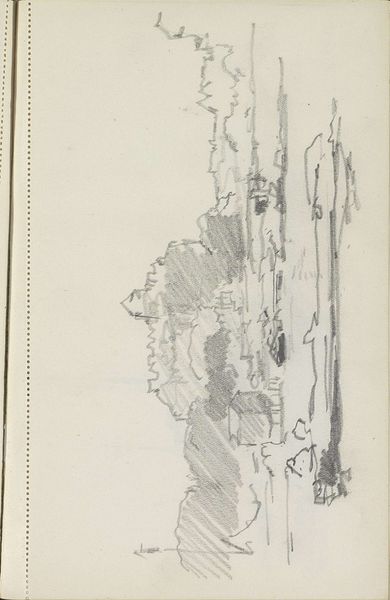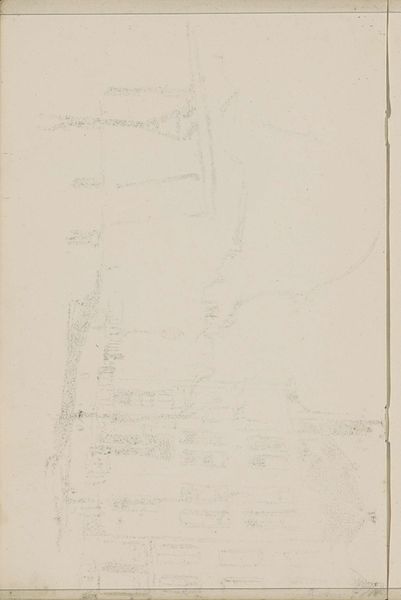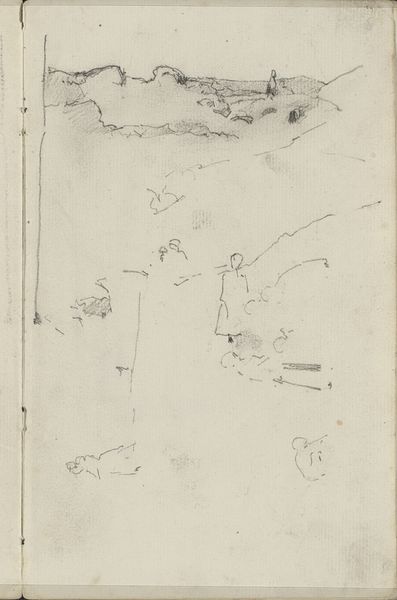
drawing, paper, pencil
#
drawing
#
landscape
#
paper
#
geometric
#
pencil
#
cityscape
#
modernism
Dimensions: height 115 mm, width 160 mm
Copyright: Rijks Museum: Open Domain
Editor: Here we have Willem Cornelis Rip’s "Building with a stepped gable and tower," sketched between 1914 and 1916, rendered in pencil on paper. The composition seems rather gestural and incomplete, giving the city a spectral presence. What strikes you when you look at it? Curator: Well, consider the timing: 1914-1916. Europe was engulfed in the First World War. How might the anxieties of that period shape artistic expression and even the choices of subject matter? Was Rip perhaps depicting a rapidly changing world, the solidity of architecture giving way to uncertainty? Editor: That's an interesting perspective. So, you're saying this isn't just a casual sketch of a building? Curator: Not necessarily. Remember, artists don't exist in a vacuum. This drawing might reflect a broader unease with established orders. Architectural drawings themselves had sociopolitical implications; they were not neutral depictions. Editor: Could you expand on that a bit? Curator: Certainly. Consider the context of modernism – artists were actively challenging traditional representation and societal norms. Was Rip perhaps experimenting with new ways to represent space and form? Did modernism aim to redefine or disrupt traditional values in the way it presents its subject matter? Editor: So, beyond just seeing a building, we’re potentially witnessing anxieties about war and a shift in how society viewed itself being expressed through art? Curator: Precisely. Art is a reflection of its time, often prompting us to examine what motivated the artist and how social upheaval manifested within artistic communities. Editor: That makes me see the sketch in a completely new light. Thanks for the context! Curator: My pleasure. Remember, viewing art through the lens of history adds depth to our understanding.
Comments
No comments
Be the first to comment and join the conversation on the ultimate creative platform.

